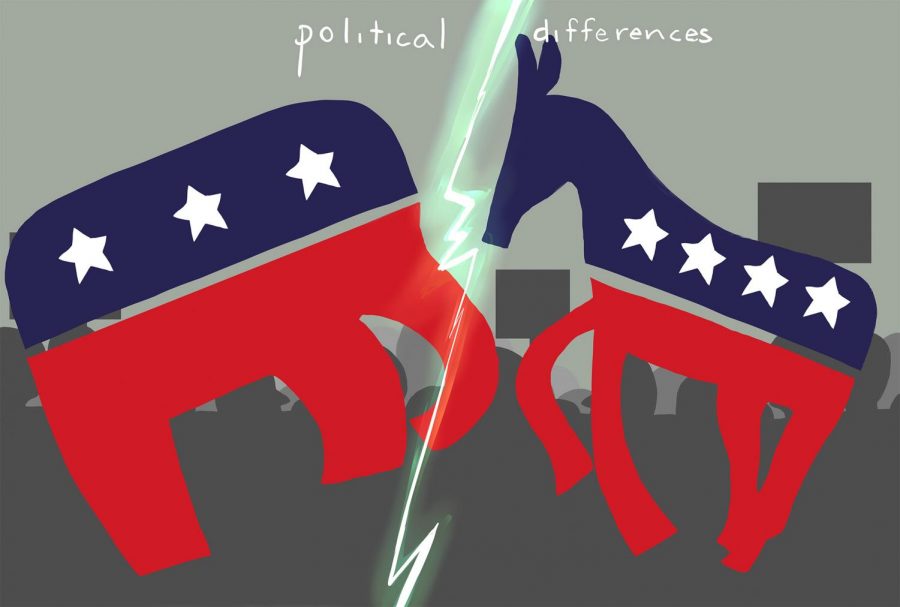Professor addresses biology of political division
Speaker says Trump conservatives desire security from outsiders
NATALIE BLAKE | THE DAILY EVERGREEN
“We could make surprisingly accurate predictions about who was a liberal and who was a conservative by looking at brain imaging,” says John Hibbing, professor of political science at the University of Nebraska.
November 7, 2019
With such strong divisions existing between conservative and liberal ideologies, what makes people from these two political tribes so different? A Foley speaker suggests Trump conservatives can be differentiated by an underlying desire for security and protection from outsiders.
John Hibbing, professor of political science at the University of Nebraska, spoke yesterday in Bryan Hall about his research to determine the bio-psychological differences between liberals and conservatives.
He said he began his research by giving participants a survey in which they selected their stance on a collection of political issues. The score that resulted from the survey would tell researchers whether each participant could be categorized as liberal or conservative.
After the categorization, participants were put through an experiment that used eye-tracking technology to measure their eye movement and reaction to collages of mixed negative and positive images.
Hibbing said it is human nature for people’s eyes to dwell on negative and disturbing images such as images of car crashes or people vomiting, but the experiment showed that conservative participants tended to dwell on negative images for far longer than their liberal counterparts.
Memorization tests of the same images revealed that conservatives were also more likely to remember negative images, he said.
Further experiments required participants to categorize animals based on whether they thought each animal was a “farm” or “zoo” animal. The experiment found that conservatives were more sure in their categorization of each animal, specifically with more ambiguous animals that could be categorized either way. However, liberals more often struggled to categorize the ambiguous examples of animals.
Hibbing said this indicates that conservatives tend to be “hard categorizers.”
He said he conducted more experiments using neuroimaging technology to measure brain response to negative nonpolitical images. He said conservatives tended to show a more sensitive nervous response to these negative images.
“We could make surprisingly accurate predictions about who was a liberal and who was a conservative by looking at brain imaging,” Hibbing said.
Further experiments were conducted with conservative participants determined to be firm Trump supporters by their survey results. Hibbing said the purpose of this was to do a systematic analysis of this demographic.
He said one of the largest political issues that set Trump supporters apart from liberals was the prioritization of national security. Eighty-eight percent of Trump conservatives believed national strength was a priority while only 29 percent of liberals felt the same way.
Hibbing described these hard-line Trump supporters as “securitarians,” as they are primarily concerned with security. He said the four issues found to be most important to participants who were Trump hard-liners were law and order, immigration, gun rights and national defense.
Hibbing said while Trump supporters are concerned with national security and protecting themselves from outsiders, liberals tend to be discontent with the powers within the country. He said the four most important issues to liberals were racial justice, healthcare, women’s rights and income inequality.
“What is a bigger threat? Outsiders or insiders? That is the difference,” he said.
According to Hibbing, political divisions between liberal “Unitarians” and conservative “securitarians” arise as the policies liberals support keep conservatives from feeling protected.









